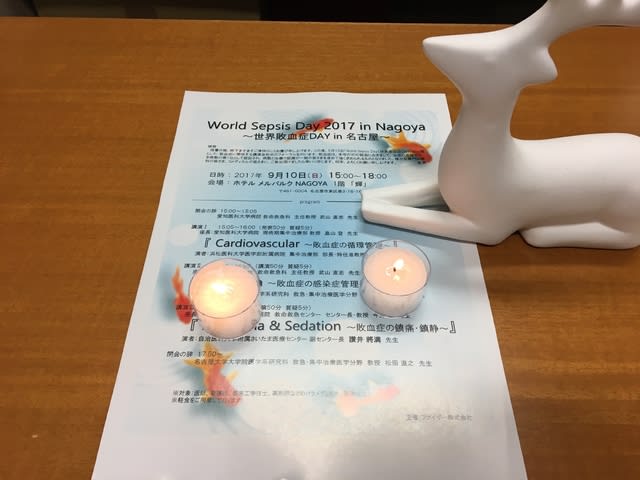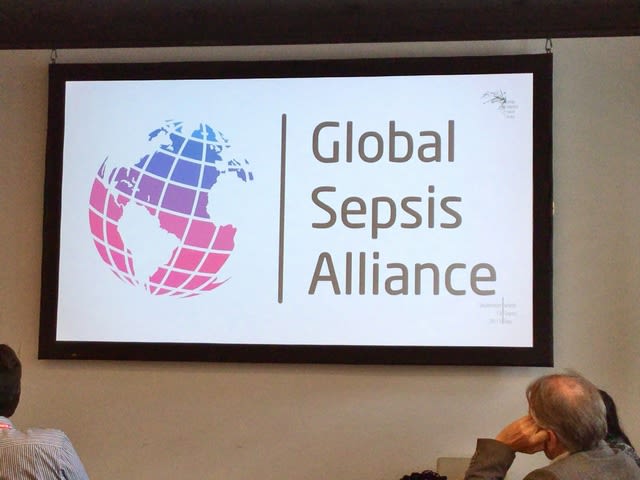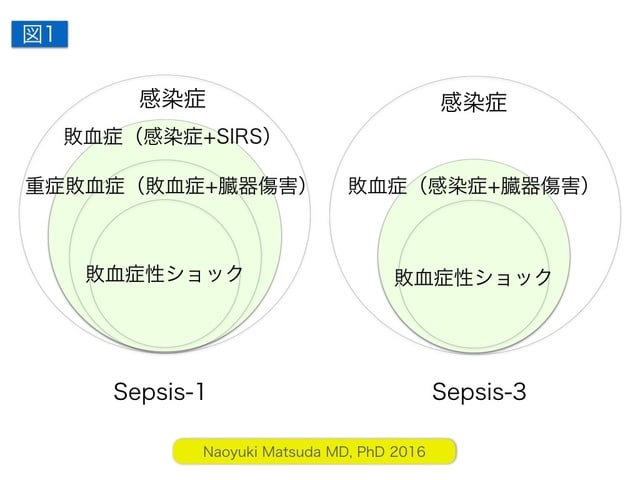Alert Cell Strategy: Regulation Theory of Inflammation and Multiple Organ Failure
Naoyuki Matsuda M.D. , Ph.D.
Summary
There are "Alert cells" that have the function of inducing white blood cells and cancer cells in tissues. The "Alert cell" is capable of producing inflammatory cytokine and chemokine via inflammatory receptors, intracellular signaling proteins, and transcription factor activities.
My series of studies analyzes "Alert cell" function from 2000 as a clarification of the pathology and therapy of sepsis, which is multi-organ failure due to infectious diseases. I identified "Alert cells" that can induce inflammation in tissues, and pathophysiologically explained the relationship between cellular functions that cause inflammation and multiple organ failure. For the progression of organ failure in systemic inflammation and cancer metastasis, it is expected to control the function of "Alert cells" in tissues.
Here, a technique such as decoy oligonucleotides of transcriptional factors can be effective by utilizing hyperphagocytosis of "Alert cells” in alerting. In order to specifically regulation of the transcription factor activity of "Alert cells", decoy oligodeoxynucleotides against nuclear factor kappa B (NF-κB) and activator protein-1 (AP-1) and siRNA of apoptotic factors. It was confirmed that Alert cell was an important target for regulation of inflammation and multiple organ failure.
Definition of "Alert cell”
Multiple organ failure tends to be induced by systemic inflammation caused by infection/sepsis, trauma, tumor, diabetes, etc. Overproduction of cytokine, chemokine and inflammatory molecules concurrently leads to organ dysfunction such as acute lung injury, acute heart failure, vasodilation, acute kidney injury, liver failure, neuromuscular disorder, disseminated intravascular coagulation. There are epithelial cells that have inflammation-inducing receptors such as Toll-like receptor, tumor necrosis factor (TNF) receptor, interleukin-1 (IL-1) receptor. These are named as "Alert cell" that senses inflammation and produces chemokine and inflammatory cytokines, and several types of inflammatory molecules such as nitric oxide (NO). "Alert cell" is a leading actor of a process of sounding a horn in tissue inflammation through production of chemokine and inflammatory molecules. After the horn, "Alert cell" will undergo cell death, supply amino acids and nucleic acids to surrounding tissues and spread inflammation around by its own molecules, ATP and mitochondrial DNA. The specific cell, other than the leukocyte, can produce inflammatory alarm to the organ, which cell type is defined as "Alert cell".
Relationship between "Alert cell” and inflammation and multiple organ failure
An important cell inducing multiple organ failure is not only leukocytic cells such as monocytes, neutrophils, dendritic cells, lymphocytes, but also alert cells which have TNF receptor, IL-1 receptor, Toll-like receptor (TLR), and other inflammatory receptors and have an activity of adhering to platelets.
Some cells of the major organs such as the lungs express inflammatory receptors on the cell membrane like the leukocyte and exactly senses inflammation and produces chemokine, adhesion molecules, inflammatory cytokines, NO, prostaglandins, von Willebrand Factor, tissue factor and other inflammatory molecules as "Alert cells". Even though various cells of major organs are classified as histologically homogeneous cell types, their inflammatory activity and capacity are different. Particularly in major organs and vascular endothelial cells, "Alert cells" are responsible for the initiation of inflammation, mainly by producing chemokine, thereby mobilizing leukocyte cells such as dendritic cells and neutrophils to the vicinity of the "Alert cells” for removal of foreign matters.
Receptor for advanced glycation end product (RAGE) and protease activated receptor (PAR) was detected Receptors on "Alert cells” in addition to TLR, TNF-R, IL-1R. Apart from progression in the inflammatory process, "Alert cells” was characterized as acceleration of cell death in Type II alveolar epithelial cells and Clara cells in the lungs and vascular endothelial cells in the aorta.
Activation of transcription factors in "Alert cell”
Overproduction of inflammatory cytokines and inflammatory molecules involved in the induction of multiple organ failure is a result of increased mRNA production due to increased transcriptional activity via binding of inflammatory ligand and the inflammatory receptor.
My study used a systemic inflammatory mouse model with Escherichia coli lipopolysaccharide and a systemic inflammatory mouse model by keyhole incision cecal ligation puncture for evaluation of "Alert cell" in tissues such as the lung, heart, kidney, muscle and blood vessel. It was confirmed that such cells also had similar functions for inflammation in the cultured cells. Bronchial epithelial cells in the lung and vascular endothelial cells in the aorta express the above-mentioned inflammatory receptor, activate transcriptional factor of NF-κB and AP-1, and produce inflammatory molecules such as chemokine and iNOS (Figure 1). Activation of the NF-κB alone enhances transcription of inflammatory cytokines such as TNF-α and IL-1β, inflammatory molecules such as NO and cyclooxygenase, an inflammatory receptor such as TLR2, and Flice inhibitory protein (FLIP) and Bcl-2, which are involved in inhibition of apoptosis.
On the other hand, in various Alert cells of major organs and vascular endothelial cells, the inflammatory receptor signal activates mitogen-activated protein kinase (MAPK) such as the Jun family and Fos family, and the transcription factor AP-1. It was activated and revealed to be involved in the transcription of apoptosis-related molecules. In summary, activation of NF-κB and AP-1 can be observed in "Alert cell" as bronchial epithelial cells, Clara cells, type II alveolar epithelial cells and vascular endothelial cells in the lung.
"Alert cell” death and multiple organ failure
In the situation where transcriptional activity of NF-κB and AP-1 increases in "Alert cell", TNF receptor type-1 (TNF-R1) diffused and associated with TNF receptor-associated death domain protein (TRADD) and receptor interacting protein-1 (RIP-1) and induced autophagy and apoptosis via Fas-associated death domain (FADD). As AP-1 activity increased, FADD increased in the "Alert cell", and the death receptor signal was activated in the "Alert cell” as a tendency to induce autophagy and extrinsic apoptosis (Figure 2).
In the "Alert cell”, NF-κB activity suppresses apoptosis via production of anti-apoptotic factors such as Bcl-2 and FLIP to prevent acceleration of cell death. However, once NF-κB activity starts to decrease in the "Alert cell”, apoptosis proceeds through AP-1 activity, and cell death of the "Alert cell” was accelerated. Thus, selection of whether intracellular signal in "Alert cell" activates NF-κB or AP-1 should be considered as an association of cell death in multiple organ failure.
Alert cell strategy
Multiple organ failure in infection and sepsis is pathologically in inflammation and cell death of "Alert cell" under activation of transcription factors such as transcription factor NF-κB, AP-1, etc. "Alert cell" tends to increase the number in systemic inflammation with hyper cytokineinemia, enhances multiple organ inflammation and exacerbates multiple organ failure by recruiting leukocytes and platelets. Such mechanisms could be involved in metastasis of cancer cells in local and systemic inflammation. "Alert cell strategy" is an therapeutic theory for specific target of "Alert cells” in systemic inflammation and organ failure. The treatment strategy focused on "Alert cell" will play an important role in development of pathophysiology and therapeutic management in sepsis and cancer.
Key publications
- Matsuda, N. (2004). Alert cell strategy. Circ Cont 25, 276-284.
- Matsuda, N., Hattori, Y.,Takahashi, Y.,Nishihira, J.,Jesmin, S.,Kobayashi, M.,Gando, S.(2004). Therapeutic effect of in vivo transfection of transcription factor decoy to NF-κB on septic lung in mice. Am J Physiol Lung Cell Mol Physiol 287: L1248-L1255.
- Matsuda, N., Hattori, Y.,Takahashi, Y.,Jesmin, S.,Gando, S. (2005). Nuclear factor-κB decoy oligonucleotides prevent acute lung injury in mice with cecal ligation and puncture-induced sepsis. Mol Pharmacol 67:1018-1025.
- Matsuda, N., Hattori, Y. (2006). Systemic inflammatory response syndrome (SIRS): Molecular pathophysiology and gene therapy. J Pharmacol Sci 101: 189-198.
- Matsuda, N., Takano, Y.,Kageyama, S.,Hatakeyama, N.,Shakunaga, K.,Kitajima, I.,Yamazaki, M.,Hattori, Y. (2007). Silencing of caspase-8 and caspase-3 by RNA interference prevents vascular endothelial cell injury in mice with endotoxic shock. Cardiovasc Res 76:132-140.
- Matsuda, N., Yamazaki, H., Takano, KI., Matsui, K., Takano, Y., Kemmotsu, O., Hattori, Y. (2008). Priming by lipopolysaccharide exaggerates acute lung injury and mortality in responses to peptidoglycan through up-regulation of Toll-like receptor-2 expression in mice. Biochem Pharmacol 75:1065-1075.
- Matsuda, N., Yamamoto, S., Takano, KI., Kageyama, SI., Kurobe, Y., Yoshiwara, Y., Takano, Y., Hattori, Y. (2009). Silencing of Fas-associated death domain protects mice from septic lung inflammation and apoptosis. Am J Respir Crit Care Med, 79:806-815.
- Matsuda, N., Yamamoto, S., Yokoo, H., Tobe, K., Hattori, Y. (2009). Nuclear factor-κB decoy oligodeoxynucleotides ameliorate impaired glucose tolerance and insulin resistance in mice with cecal ligation and puncture-induced sepsis. Crit Care Med 37:2791-2799.
- Matsuda, N., Teramae, H., Yamamoto, S., Takano, KI., Takano, Y., Hattori, Y. (2010). Increased death receptor pathway of apoptotic signaling in septic mouse aorta: effect of systemic delivery of FADD siRNA. Am J Physiol Heart Circ Physiol 298;92-101.
- Matsuda, N. (2016). Alert cell strategy in SIRS-induced vasculitis: sepsis and endothelial cells. J Intensive Care 4:21.
Figures

Figure 1. Intracellular signal transduction of inflammatory receptors in "Alert cell".
"Alert cell” has a intracellular signal transduction to activate transcriptional factors through inflammatory receptors. Nuclear factor-κB (NF-κB) and activator protein-1 (AP-1) were activated in alert cells and lead to produce inflammatory mRNA.
TNF-R1: tumor necrosis factor receptor,IL-1R: Interleukin-1 receptor, MyD88: myeloid differentiation factor 88, IRAK: Interleukin-1 receptor-associated kinase, TRAF: tumor necrosis factor(TNF)receptor –associated factor, TAK1: TGF-βactivated kinase 1, JNK: c-Jun N-terminal kinase, ERK: Extracellular signal-regulated kinase, MAPK: mitogen-activated protein kinase, IKK: inhibitory κB kinase, NEMO: NF-κB essential modulator, I-κB: inhibitory-κB, TRADD: TNF receptor-associated death domain, FADD: Fas-associated death domain,p: phosphorylation.

Figure 2. The death receptor signaling in Alert Cell.
Death receptors (DR) signal is present also in alert cells of the major organs and vasculature. TNF-R1, Fas (CD95), and DR4 (TRAIL receptor 1), and DR5 (TRAIL receptor 2) have a death signal in alert cells via adaptor molecules of TRADD and FADD. On the other side, TNF-R1 produces the anti-apoptotic factors such as FLIP and BclX via activation of nuclear factor-κB (NF-κB) through RIP1-TRAF pathway. When NF-κB activity decreases and AP-1 activity increases, DR family and FADD tend to proceed apoptosis in alert cells. TNF-R1: tumor necrosis factor receptor 1, TRADD: TNF receptor-associated death domain protein, RIP1: receptor-interacting protein 1, IKK: inhibitory-κB kinase, TRAF: tumor necrosis factor receptor-associated factor, FADD: Fas -associated death domain protein, FLIP: FLICE inhibitory protein.
※ 本内容は,2017年9月29日に一部を一般公開し,2018年5月6日に内容に追記しています。 松田直之



























